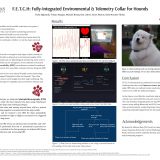Creating a Less Addictive Opioid using Computational Chemistry Nayiri Alexander, Makena Augenstein, Chella Garcia, Anna Greene, Angelina Sorenson
May 11, 2020
To this day, there is no opioid that binds selectively in peripheral tissue. The binding of opioids in central and peripheral tissues is what results in long term addiction. Opioids, such as morphine, bind at physiological and injured pH. Decreasing the pKa of the morphine molecule leads to selective binding in injured tissues only. The fluorination of the morphine molecule beta to the tertiary amine in the equatorial position decreases the pKa of the molecule, resulting in selective binding in acidic tissues.


